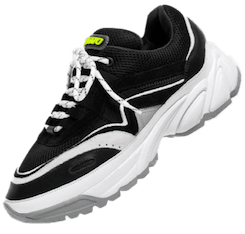To build a successful ecommerce business, you need an effective way to source products — but like so many things in life, this is easier said than done.
Before you can source products, you must choose a product sourcing method that works for you, evaluate different product sourcing companies, and then select a supplier to work with.
If that’s not enough hard work, there are so many options out there — which ones should you consider?
No need to worry — we’ve got you covered.
In this product sourcing guide, you’ll learn everything you need to know to get started. First, we’ll explore 3 popular product sourcing strategies. We’ll then take a look at 9 product sourcing websites and apps that you can use.
But first, let’s get on the same page:



What Is Product Sourcing?
Here’s a quick product sourcing definition:
Product sourcing is the act of acquiring products that you can sell. Today, most businesses source products online via B2B marketplaces, but you can also source products locally or at trade shows.
How to Source Products for Your Business
Basically, there are 3 main product sourcing strategies — you can source products from:
- Dropshipping suppliers, for a hands-off experience
- Wholesalers, to sell third-party goods
- Manufacturers, if you want to create custom products
Each of these product sourcing methods will affect virtually every aspect of your business operations and sales efforts, so it’s vital to choose the best one for you.
Let’s explore each one in a bit more detail so you can decide how to source products for your business.
→ Click Here to Launch Your Online Business with Shopify
1. Dropshipping Sources
Dropshipping is hands-down the simplest way to source products. The best part? Dropshipping isn’t just a product sourcing method — it’s also a fulfillment method.
So, how does dropshipping work?
First, you would partner with a dropshipping source and select the products you want to sell. You can then add these products to your store and start marketing them online. Then, when you receive an order from a customer, your dropshipping source will be notified, and they’ll send the product to your customer for you.
The image below illustrates this process:

Dropshipping’s key strength is that you don’t need to buy inventory upfront — which means you can start an ecommerce business for just $39 per month with a Basic Shopify account.
What’s more, you can test as many products as you like without risk of losing investment.
It’s also easy to scale since you can add products to your store without a time-consuming and costly product sourcing process.
That said, dropshipping can be very competitive thanks to a low barrier to entry. Also, profit margins are relatively low as you have to pay your dropshipping supplier to produce, store, and ship products to your customers.
Plus, it can be tough to differentiate your store from competitors’ if you’re selling generic products. But you can get around this issue by selling print-on-demand products — a type of dropshipping where your supplier adds your designs to products before shipping them to customers.
2. Wholesalers
This next way to source products kicks things up a notch. With this method, you would purchase products in bulk from a wholesaler.
Now, if you’re just starting out, it’s possible to have the goods shipped to your home. You could then store them in a spare room or in your garage and ship orders to customers yourself.
However, as your business grows, you’ll have to set up a warehouse and onboard a fulfillment team or hire a third-party fulfillment service to manage these tasks for you such as Shopify’s Fulfillment Network.

The key advantage to purchasing products wholesale is that you’ll get a low cost per unit — and the more units you buy, the cheaper the unit will be. Consequently, the more money you invest upfront, the larger your profit margins will be — this is referred to as ‘economy of scale.’
Sourcing products in this way is also a relatively straightforward process.
Some wholesale suppliers also provide private label services — this is when you would purchase products in bulk and have the supplier add your branding to them. For example, Havlu Sport Beach & Swim Towels allows businesses to purchase a label package and sell towels under their own brand.

However, just like with dropshipping, it can be challenging to differentiate products from competitors if you don’t opt for private labeling.
And investing in inventory upfront brings financial risk as no product is guaranteed to sell. Although, you can reduce risk by selling pre-validated products from established brands.
Also, as your business grows, you’ll likely need to source products from many suppliers, which can create management challenges.
3. Manufacturers
Manufacturing is, without a doubt, the most challenging way to source products for your business.
Typically, you’ll start with product designs and prototyping. Then, once you have a finished design, you’ll evaluate manufacturers and order test batches before you select a supplier.
It’s also worth mentioning that it’s possible to work with a manufacturer to alter or improve a generic product they already make. That said, it’s nearly impossible to retain exclusive rights to the product you create if you do this. And so, the manufacturer is likely to sell the improved product to your direct competitors.
Still, if you have an original product idea and want to create something unique to set yourself apart from competitors, this is the only way to go.
Unsurprisingly, this product sourcing method is the most expensive and time-consuming approach. Manufacturers typically require high minimum order quantities to start production, and lead times can take months.
Plus, sourcing products in this way comes with all the same drawbacks that you’d encounter when purchasing goods wholesale, such as the need for an upfront investment, storage space, and fulfillment infrastructure.
To make things even more complicated, it can also be challenging to find a trustworthy and cost-effective supplier — especially if you’re sourcing products from abroad.
Choose a Product Sourcing Strategy
Now that you understand the 3 main ways to source products, which strategy is right for your business? Here’s what to do:
- Dropshipping sources: If you’re just starting your entrepreneurial journey or would like to expand an existing business quickly, opt for dropshipping. This product sourcing method will allow you to hit the ground running and hone your business skills before risking capital purchasing upfront inventory.
- Wholesalers: If you have experience running an ecommerce business and have some money to invest, consider purchasing products wholesale. Although you’ll need to set up a supply chain or work with a fulfillment service, you can enjoy higher profit margins and build a brand with private labeling opportunities.
- Manufacturers: If you’re an experienced ecommerce seller with a unique product idea, capital to invest, and a willingness to take on complex challenges, consider sourcing products to sell from a manufacturer.
9 Product Sourcing Websites and Apps
Once you’ve chosen a way to source products, what’s next? Now it’s time to check out some sourcing websites and apps to find products for your business.
Here are 10 product sourcing websites and apps to consider:
Dropshipping Sources
- DSers
- Printify
- Printful
- Dripshipper
- Creative Hub
- Lulu Xpress
Wholesale and Manufacturer Product Sourcing Websites
- Alibaba
- IndiaMart
- Made-In-China
Let’s take a closer look at each one.
Dropshipping Sources
1. DSers

DSers is one of the leading dropshipping apps that provide a way to start selling products on Shopify in less than an hour!
Simply sign up for Shopify, add the DSers app, browse products, and add them to your store.
There are millions of products available in virtually every niche imaginable. However, it’s smart to create a branded store with a selection of complementary products in a particular vertical.
There’s a free plan available, too!
2. Printify

Printify is one of the best product sourcing apps for print-on-demand items.
It connects you to a host of print-on-demand suppliers all over the world, so you can choose a supplier that’s geographically close to your customers for faster shipping. There are also more than 300 products to choose from.
This product sourcing app also provides a super simple mockup generator to help you customize products with your designs.
Like DSers, Printify also has a free plan that you can use to get started.
3. Printful

Printful is another popular print-on-demand product sourcing app with more than 220 products that you can dropship.
It offers a range of printing and customization options, such as direct-to-garment, cut-and-sew, and embroidery. This product sourcing company also enables you to customize product tags and include branded inserts in the product packaging.
4. Dripshipper

Dripshipper offers print-on-demand artisan coffee — so if you’re passionate about coffee, this is the dropshipping source for you!
The service ships whole beans the same day they’re roasted and ships ground coffee the day after it’s roasted. The service is based in the US but will dropship coffee worldwide.
5. Creative Hub

Creative Hub is a print-on-demand company for art. It provides a complete white label service so you can sell art under your own brand name.
You can use Creative Hub to sell your art or contemporary art from the service’s library (if you do this, you would split the profits with the creators of the art that you sell).
The service is based in the UK but ships anywhere internationally for just £7 plus VAT.
6. Lulu Xpress

Lulu xPress is a print-on-demand service for books, calendars, comic books, and magazines.
The service offers plenty of customization options, and there are no set-up charges or handling fees. Also, this dropshipping source will ship products to your customers globally.
It’s also worth noting that the company is a certified B Corporation and sources materials in a sustainable and environmentally conscious way.
Wholesale and Manufacturer Product Sourcing Websites
7. Alibaba

If you’re interested in sourcing products wholesale or want to find a manufacturer, check out Alibaba. This platform is the largest B2B marketplace in the world. It houses suppliers from more than 190 countries and regions, although the majority are based in China.
If you use Alibaba, tread carefully — scammers use the site. However, there is a service called Trade Assurance that’s designed to help you find high-quality, reliable product sources.
8. IndiaMart

IndiaMart is the second-largest B2B marketplace globally and lists thousands of manufacturers and millions of products for wholesale.
As the name may suggest, most of the platform’s suppliers are based in India. IndiaMart also has a service to help buyers identify the best suppliers to work with.
9. Made-In-China

Made-In-China is another hugely popular B2B marketplace that exists to connect suppliers in China with global buyers.
The platform offers a service that allows you to purchase reports detailing suppliers’ financial situation, product capacity, work environment, and more.
Summary: How to Source Products
Before you start looking for products to sell, it’s a good idea to choose a product sourcing method. In summary, there are 3 main ways to source products:
- Dropshipping sources
- Wholesalers
- Manufacturers
Remember, if you’re new to ecommerce, it’s a good idea to avoid large risks and to hone your skills with dropshipping. But if you’ve got a little experience under your belt and some money to invest, consider sourcing products wholesale or work with a manufacturer.
To finish up, here are 10 of our favorite product sourcing apps and websites:
Which of these product sourcing apps are you interested in using? Let us know in the comments below!
Want to Learn More?
- How to Use Shopify: A Quick and Easy Shopify Tutorial for Beginners
- Shopify Pricing Plans: Which Shopify Plan is Best For Me?
- How to Start an Online Business in 2023
- 10 Important Ecommerce Trends to Watch for Next Year
